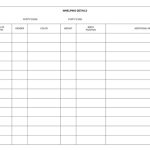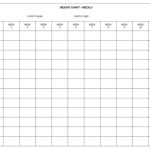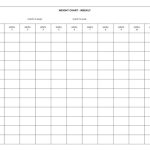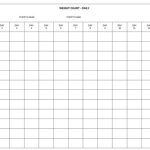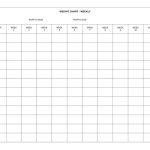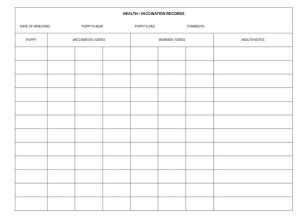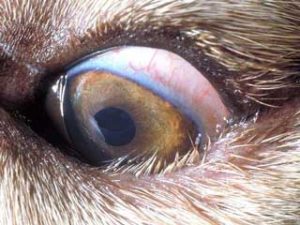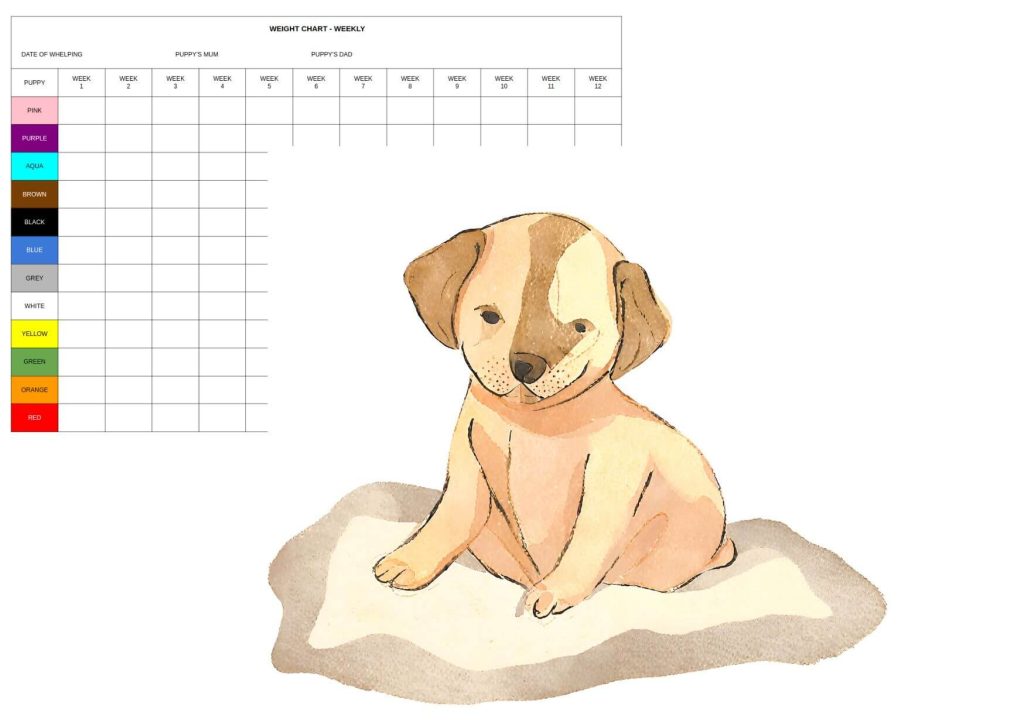
As any responsible pet owner would attest, the arrival of a new puppy is a joyous and exciting occasion. However, amid the joy and cuddles, it’s crucial to recognize the significant responsibility that comes with puppy parenthood. Central to this responsibility is the vigilant monitoring of your newborn puppy’s health. Just like human infants, puppies are fragile during their early weeks, and ensuring their well-being requires a keen eye and proactive care.
In navigating puppy parenthood, we emphasize the vital role of health monitoring. Discover essential tools in our article – specifically crafted charts to effortlessly track your puppy’s key data points, ensuring their optimal well-being.
Importance of monitoring a newborn puppy’s health
Why Monitor?
The first few weeks of a puppy’s life are a crucial period of development, during which they are particularly susceptible to various health concerns. Monitoring their health allows you to detect and address potential issues promptly, ensuring a smooth transition into a healthy and happy adulthood.
Early Detection Saves Lives
Puppies, much like infants, are unable to communicate their discomfort or ailments verbally. Monitoring their health provides a preemptive advantage, allowing you to spot subtle changes in behavior, appetite, or physical condition that might indicate an underlying problem. Early detection often translates to more effective intervention and, in some cases, can be a lifesaver.
Weight as a Vital Indicator
One of the key metrics in monitoring a newborn puppy’s health is their weight. A steady and appropriate weight gain is a positive sign of proper development. According to the research:
The simplest and most inexpensive way to monitor puppies and recognize problems early is to weigh them regularly ), preferably daily for the first two weeks, then at least every 3 days until one month of age.
Lawler, D. F. (2008). Neonatal and pediatric care of the puppy and kitten. Theriogenology, 70, 384–392. 10.1016/j.theriogenology.2008.04.019
In our detailed resource, we’ll provide insights into effectively tracking your puppy’s weight using a daily weight chart. Discover practical advice to ensure a healthy growth trajectory for your furry friend.
Comprehensive Guides and Charts
To assist you in this vital task, we’ll provide user-friendly charts and guides that make monitoring your puppy’s health a seamless process. These resources will cover various aspects, from weight tracking to developmental milestones, helping you stay organized and proactive in your caregiving role.
Week 1: The Whelping Phase
Whelping Details: The Beginning of Life
The first week after birth is a time of tremendous change and adaptation for both the mother and her newborns. The whelping process involves intense maternal care as the puppies adjust to their new environment. Understanding the intricacies of this phase is essential for ensuring a smooth transition from the womb to the outside world.
Equipment Needed:
- Whelping box with low sides for easy access
- Soft, clean bedding for comfort
- A heating pad or heat lamp for temperature control
- Thermometer to monitor the whelping area temperature
- Puppy scale for regular weight checks
Temperature Control: Mimicking Mom’s Warmth
Puppies, especially in their early days, are highly susceptible to temperature fluctuations. Mimicking the warmth of the mother’s body is crucial for their comfort and well-being. We’ll provide practical tips on maintaining an optimal temperature in the whelping area, ensuring the puppies are cozy and content.
Nesting: Creating a Safe Haven
A carefully prepared nesting area contributes significantly to the well-being of both the mother and her pups. We’ll discuss the elements of an ideal nesting space, including bedding choices and the strategic placement of the whelping box. A secure and comfortable environment fosters a sense of security, promoting healthy development in the crucial early days.
Mother-Puppy Interaction: Building Bonds
The bond between a mother and her puppies is a cornerstone of their early development. We’ll explore the importance of positive interactions, from nursing to gentle grooming, and provide guidance on fostering a nurturing environment. Understanding and supporting these interactions lays the groundwork for strong, healthy relationships within the litter.
Equipment Needed:
- Quiet and secluded space for mother and puppies
- Nursing supplies if assistance is required
Tips for Creating Comfort: A Happy, Healthy Start
Closing this section, we’ll offer practical tips for pet parents on creating an environment that prioritizes the comfort and well-being of the newborns. From selecting appropriate bedding to ensuring a quiet and stress-free space, these insights aim to empower you in providing the best possible start for the newest members of your family.
Equipment Needed:
- Comfortable bedding
- Quiet and stress-free environment
Week 2-4: Monitoring Growth and Development
Dive into Puppy’s Growth
As the second to fourth weeks unfold, your puppy undergoes rapid growth and development. This phase is marked by significant changes, both in physical size and behavior. Understanding and monitoring these changes are crucial for ensuring your puppy’s health and well-being.
Introducing Weekly Weight Charts
Central to monitoring your puppy’s growth is the use of weekly weight charts. These charts offer a visual representation of your puppy’s weight progression, allowing you to track their development over time. To make this process even more accessible, we offer weekly weight charts for sale, providing a convenient tool for pet owners invested in their puppy’s health.
Key Points for Using Weekly Weight Charts:
- Record your puppy’s weight consistently at the same time each week.
- Plot the weights on the chart to observe trends and deviations.
- Consult with your veterinarian if you notice unexpected changes in weight.
To assist you in this monitoring process, we offer professionally designed weekly weight charts for sale. These charts provide a user-friendly and organized way to track your puppy’s growth. Invest in your puppy’s health and development by incorporating these charts into your routine.
Key Developmental Milestones
During weeks 2-4, your puppy reaches crucial developmental milestones. From opening their eyes to taking their first wobbly steps, each achievement signifies progress. Understanding these milestones not only deepens your connection with your puppy but also serves as a vital indicator of their overall health and development.
Deworming
Because worms are so common in puppies, vets recommend de-worming them for the first time when they’re 2 to 3 weeks old.
How Do You De-worm Dogs and Puppies? Amy Flowers, DVM. Webmd
Signs of a Healthy Puppy
Recognizing signs of a healthy puppy goes beyond just weight. We’ll delve into behaviors and physical indicators that signal well-being. From a strong suckling reflex to a shiny coat, these signs offer valuable insights into your puppy’s thriving state.
Week 5-7: Introducing Solid Food and Basic Care
Transition to Solid Food: Weaning Process
Explore the transition from milk to solid food during weeks 5-7, a crucial phase in your puppy’s development. Navigate the weaning process to ensure a seamless shift, understanding the nutritional needs essential for their overall health. Step-by-step guide:
- Gradual Introduction: Start introducing high-quality puppy food gradually while continuing to provide mother’s milk or a suitable milk replacer. Begin with a small amount mixed with puppy formula to create a semi-liquid consistency.
- Meal Frequency: Maintain frequent but smaller meals throughout the day. This helps in the digestion process and ensures that the puppies receive sufficient nutrients.
- Monitor Responses: Observe the puppies’ reactions to the new food. Some may take to it quickly, while others might need more time to adjust. Ensure that they are showing interest and enthusiasm for the solid food.
- Adjusting Consistency: Over the course of the weeks, gradually decrease the amount of formula and increase the solid food portion. Adjust the consistency to a thicker texture as the puppies become more comfortable with chewing.
- Encourage Individual Eating: Place individual food bowls for each puppy to encourage independent eating. This helps prevent competition and ensures that each puppy gets an adequate share of nutrition.
- Regular Weighing: Continue to weigh the puppies regularly to monitor their growth. Adjust the amount of solid food based on their weight gain and individual needs.
- Hydration: Always provide access to fresh water. As the puppies consume more solid food, their water intake becomes increasingly important for hydration.
- Transition Completion: By the end of the weaning process (around week 7), the puppies should be fully transitioned to solid food. At this point, they should be eating solid meals without the need for supplemental milk.
- Consult with a Veterinarian: If you encounter any challenges or if there are concerns about the puppies’ health, consult with a veterinarian. They can provide tailored advice based on the specific needs of the litter.
Guidance on Basic Care Routines
Establish fundamental care routines during this stage, including grooming and socialization. These practices contribute to your puppy’s physical well-being and set the groundwork for a well-adjusted and sociable adult dog.
Addressing Common Concerns
Encounter common concerns that may arise between weeks 5-7, encompassing dietary adjustments and behavioral shifts. Gain insights and tips to navigate challenges frequently faced during this stage of puppyhood.
Week 6-12: Vaccination and Health Records
Importance of Vaccinations and Timing
Commencing at week 8, your puppy requires a series of essential vaccinations to bolster their immune system against common canine diseases. These include core vaccines such as distemper, parvovirus, and adenovirus. Understanding the timing of vaccinations is critical; consult your veterinarian to create a customized schedule tailored to your puppy’s needs.
Health records play a pivotal role in tracking your puppy’s vaccinations and overall health history. Our bundle of PDF documents includes comprehensive vaccination and health records, providing an organized and accessible way to manage your puppy’s medical information.
Sample Vaccination Schedule
Follow this sample vaccination schedule as a guideline for your puppy’s immunization:
| Puppy Age | Core Vaccines/Required Vaccines | Noncore Vaccines/Optional Vaccines |
|---|---|---|
| 6-8 weeks | Distemper, Adenovirus, Parvovirus, Parainfluenza | Bordetella |
| 10-12 weeks | Distemper, Adenovirus, Parvovirus, Parainfluenza | Canine Influenza, Leptospirosis, Bordetella, Lyme Disease |
| 16-18 weeks | Distemper, Adenovirus, Parvovirus, Parainfluenza, Rabies* | Canine Influenza, Leptospirosis, Bordetella, Lyme disease |
| 12-16 months | Distemper, Adenovirus, Parvovirus, Parainfluenza, Rabies* | Leptospirosis, Bordetella, Lyme disease, Coronavirus |
| Every 1-2 years | Distemper, Adenovirus, Parvovirus, Parainfluenza | Canine Influenza, Leptospirosis, Bordetella, Lyme disease, Coronavirus |
| Every 1-3 years | Rabies* |
* Regular rabies vaccinations are required by US law in most states. Follow local laws and consult the state veterinarian as needed.
Additional sources about vaccination:
- https://wsava.org/wp-content/uploads/2020/01/WSAVA-Vaccination-Guidelines-2015.pdf
- https://www.aaha.org/aaha-guidelines/2022-aaha-canine-vaccination-guidelines/recommendations-for-core-and-noncore-canine-vaccines/
- https://www.webmd.com/pets/dogs/pet-vaccines-schedules-cats-dogs
Deworming
The guidelines recommend deworming puppies at 2, 4, 6, and 8 weeks of age. If the breeder has not already completed this, we will recommend deworming the puppy every 2 weeks for a total of 4 treatments.
Once the initial 4-treatment regimen is complete, we recommend deworming puppies monthly until 6 to 8 months of age.
Canadian Guidelines for the Treatment of Parasites in Dogs and Cats
Always consult with your veterinarian for a personalized schedule based on local regulations and your puppy’s specific health needs. This proactive approach is crucial in ensuring their long-term well-being.
Potential Health Issues
During weeks 8-12, be attentive to potential health issues, including:
- Mild reactions to vaccinations, such as lethargy or mild swelling at the injection site.
- Intestinal parasites, which can be addressed through deworming medications.
- Behavioral changes or signs of discomfort that may indicate underlying health issues.
Regular veterinary check-ups allow for early detection and prompt intervention if any health concerns arise. Remember, your veterinarian is your best resource for guidance on your puppy’s health and vaccinations.
Monitoring Health and Red Flags
Recognizing Red Flags
Be vigilant for red flags that necessitate immediate veterinary attention. Watch for signs such as:
- Severe diarrhea or vomiting
- Lethargy or persistent weakness
- Difficulty breathing
- Loss of appetite or refusal to eat
- Abnormal behaviors or sudden aggression
Any of these signs warrants prompt consultation with your veterinarian to address potential health issues.
At-Home Health Monitoring
Between veterinary visits, engage in proactive at-home health monitoring:
- Weigh your puppy regularly to ensure steady growth.
- Check for any abnormalities in their coat, skin, or eyes.
- Monitor stool consistency and look for signs of parasites.
- Observe their behavior for any changes in activity or social interactions.
Keeping a keen eye on these factors allows you to detect early signs of health issues and collaborate effectively with your veterinarian for timely interventions.
Your Puppy’s Well-Being Beyond 12 Weeks
Ongoing Care and Health Monitoring
As your puppy grows beyond 12 weeks, continuous care and health monitoring are vital. Regularly observe and interact with your dog to detect subtle changes in behavior, appetite, and energy levels. This ongoing attention ensures you remain attuned to their well-being.
Transitioning to Adult Dog Care
Guiding your puppy into adulthood involves transitioning their care regimen. Adjust their diet to suit their changing nutritional needs and consider updating training methods to address evolving behavioral patterns. Gradual adjustments foster a smooth transition to adult dog care.
Importance of Regular Veterinary Check-Ups
Regular veterinary check-ups persist as a cornerstone of your dog’s well-being. Schedule routine visits to address preventive care, monitor vaccinations, and discuss any emerging health concerns. Proactive veterinary care contributes to a longer, healthier life for your canine companion.
PDF bundle
It’s including PDF files in high quality:
- Weight chart – for tracking puppy weight
- Daily – for the first 2 weeks
- Weekly – for the first 12 weeks. Choose from 3 designs where the first column: without color (you can write what you want), colored and colored with labels
- Whelping details – record time of birth, gender, color, weight, birth position, and additional info for each newborn
- Health/vaccination records – track vaccination, wormer, and make health notes for each newborn puppy
Example of documents in small size and lower quality, for informational purposes only:

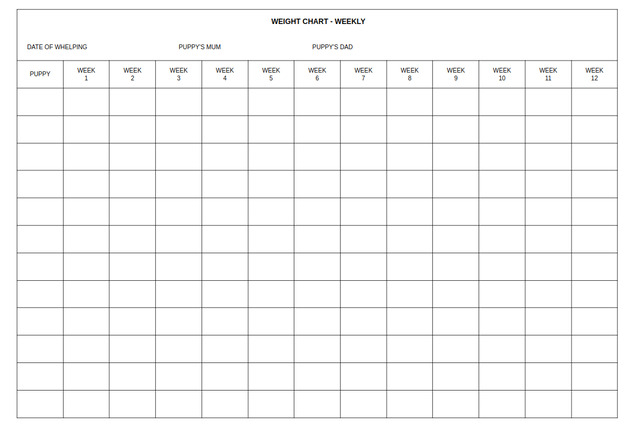
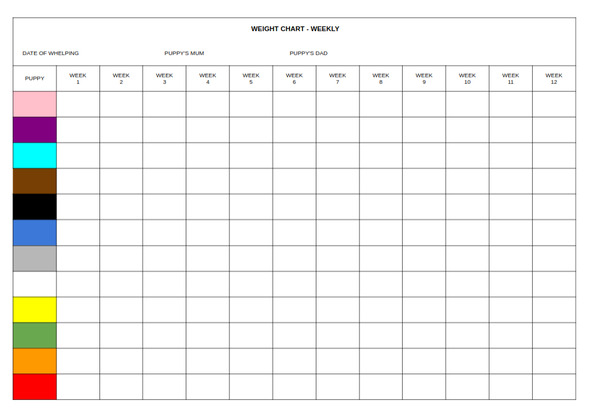
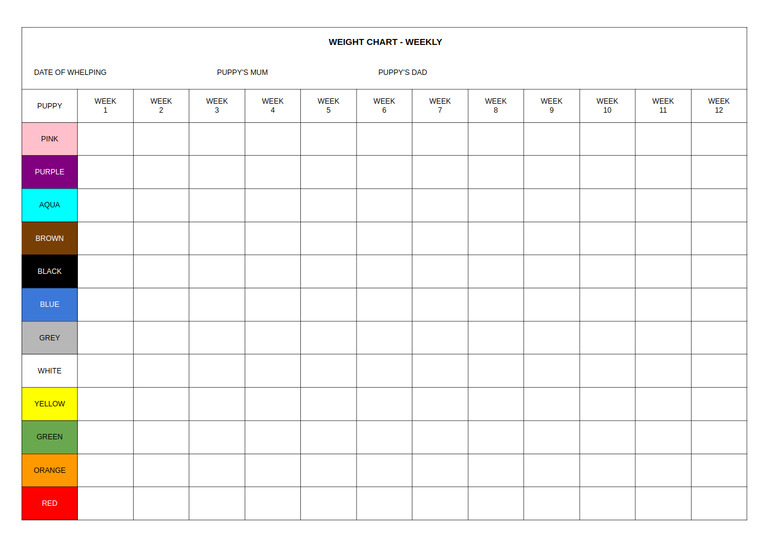
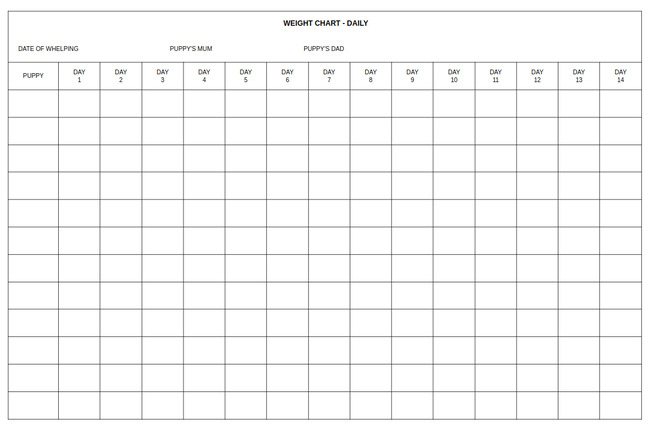
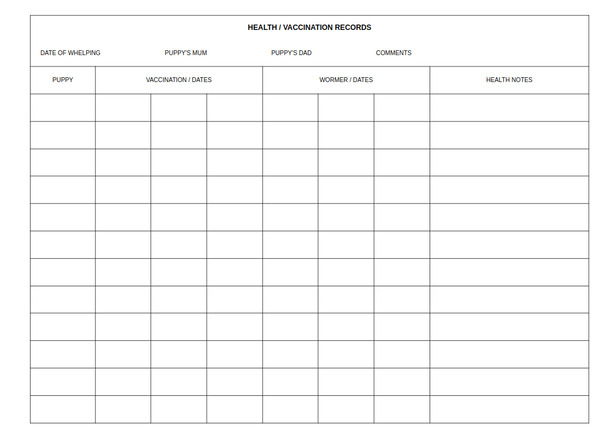
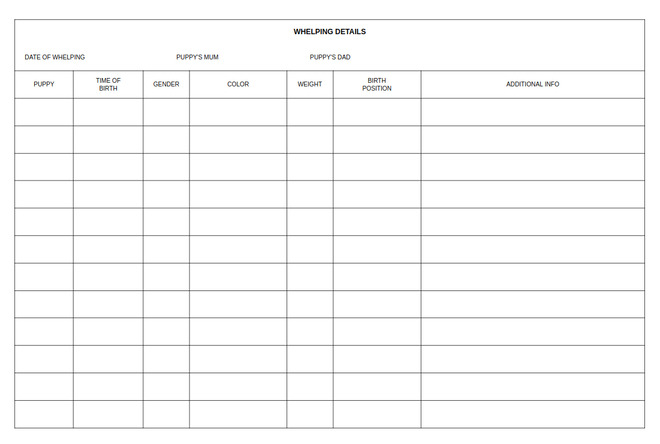
Puppy Whelping Charts for Keeping Records
Price: $7.99
Use promocode: 2024sale to get the christmas price $7.99 $5.99 !
You will be able to print the PDF files in A4 landscape when you get the original PDF files in high quality.
We value your experiences and questions as fellow puppy parents! Share your journey or ask any queries in the comments below. Our community is here to support and learn from each other.
Don’t miss out on our exclusive health documents designed to enhance your puppy parenting experience. Explore our insightful charts and guides tailored for your puppy’s well-being. If you have specific requests or would like to suggest amendments to our documents, feel free to reach out. We even offer the option for custom design to cater to your unique needs.
Your engagement enriches our community, and we look forward to hearing about your puppy adventures and providing the support you need!

